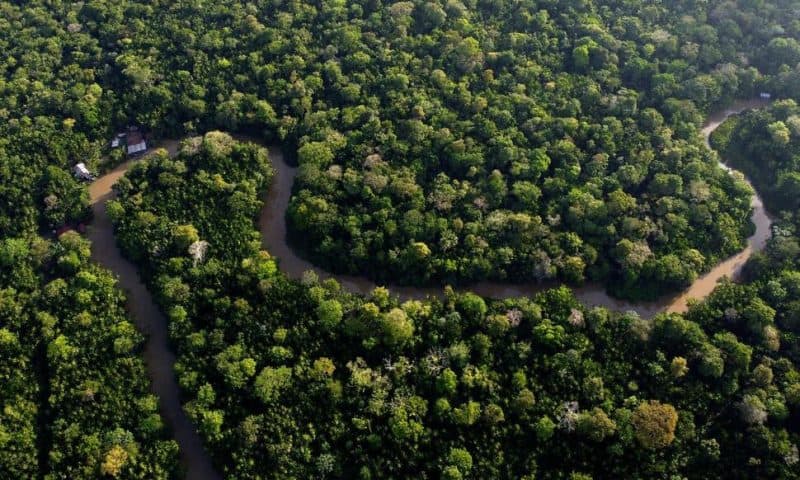Brazil’s Forest Service announced a plan to bring a massive area of Amazon rainforest currently vulnerable to illegal deforestation under national governance Tuesday
BRASILIA, Brazil — To combat ongoing destruction in the Amazon rainforest, Brazil announced a plan Tuesday to dramatically expand selective logging to an area the size of Costa Rica over the next two years.
In Brazil, vast forest lands are designated as public yet have no special protection or enforcement and are vulnerable to land grabbing and illegal deforestation. Criminals frequently take over land and clear it, hoping the government will eventually recognize them as owners, which usually happens.
“The main goal of forest concessions is the conservation of these areas,” said Renato Rosenberg, director of forest concessions for the Brazilian Forest Service, during an online press conference. “They also create jobs and income in parts of the Amazon that would otherwise have little economic activity.”
Companies that get timber concessions have to follow strict rules. They can log up to six trees per hectare (2.5 acres) over a 30-year period. Protected species, such as Brazil nut, and older, seed-producing trees are off limits.
The idea is that granting permission to timber companies to take a limited number of trees gives them a stake in overseeing the forest, something the Brazilian government cannot afford to do. Several studies show that illegal deforestation in concession areas is significantly lower than outside them.
Eventually, President Luiz Inácio Lula da Silva plans to treat as much as 310,000 square kilometers (112,000 square miles) of public undesignated Amazon rainforest this way — an area the size of Italy.
A working group is assessing which areas should be designated as conservation areas, Indigenous territories or forest concessions.
Currently, there are 22 such timber lease areas in the Amazon, covering more than 13,000 square kilometers (5,000 square miles). Since the country initiated its first timber concessions, only two companies have declined to renew their leases, which shows the model works, according to Rosenfeld. Still, the program is much smaller than first envisioned when Brazilian legislation established it in 2006.
Brazil’s Forest Service is part of the Ministry of Environment and Climate Change. It was created that same year to promote sustainable activities in public forests by private organizations.
The government plan is a partnership with two private institutions — Imaflora and Systemiq — that will help do research and design community forest management, according to an official statement.
Funding comes from Partnering for Accelerated Climate Transitions, the primary program of the United Kingdom´s International Climate Finance to address climate change.
The announcement was met with skepticism by the National Forum of Forest-Based Activities, representing some 3,500 companies with interests in the timber industry.
“Forest management is the best way to halt environmental crime, from land-grabbing to illegal logging,” Frank Almeida, president of the National Forum, told the AP. “But there is no use in creating a project that won´t become a reality,” he said, referencing recent government actions related to exports that have generated business uncertainty.
The main one is that two of Brazil´s leading timber products — ipe wood and tonka beans — were listed with the Convention on International Trade in Endangered Species of Wild Fauna and Flora for species requiring export permits. Unless Brazil meets a November deadline for submitting a so-called non-detriment finding, Almeida said exports of these species will be halted.
In a press statement, Brazil’s environmental law-enforcement agency, known as Ibama, said it will address this issue before the November deadline.
Maisa Isabela Rodrigues, a forest engineering professor at Brasilia National University, said the plan is the right approach, but needs some adjustment. Forest management is the best way to reconcile forest preservation and logging, she told the AP. But research indicates the 30-year period between timber harvests is not long enough for the recovery of some of the most valuable species. She said the program probably won’t work in remote areas, because sky-high transportation costs could make them economically unattractive.

